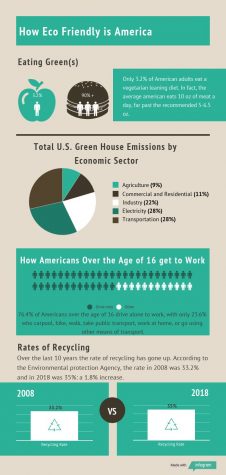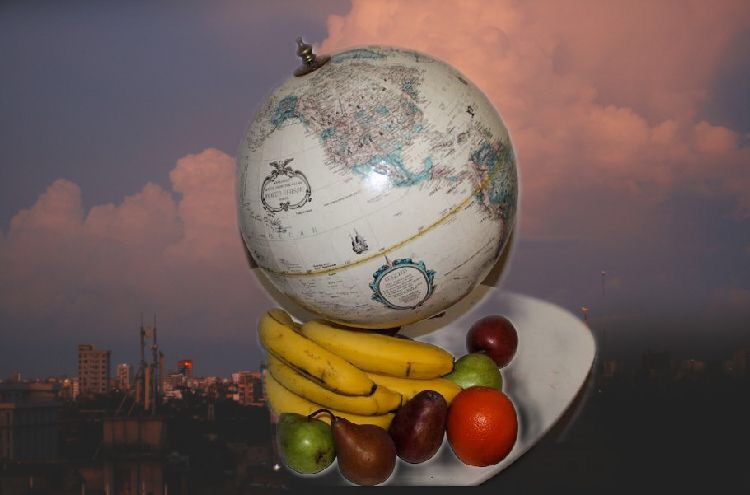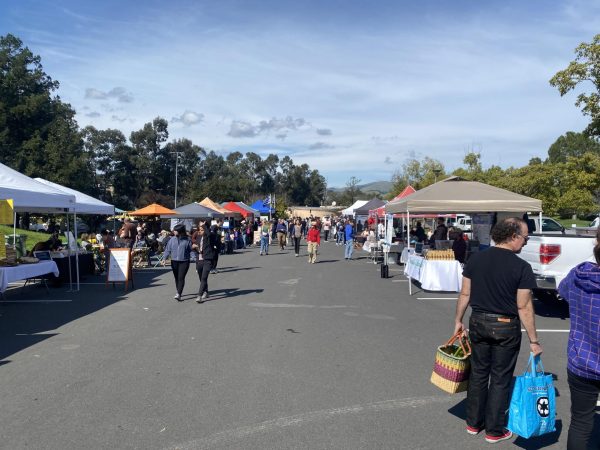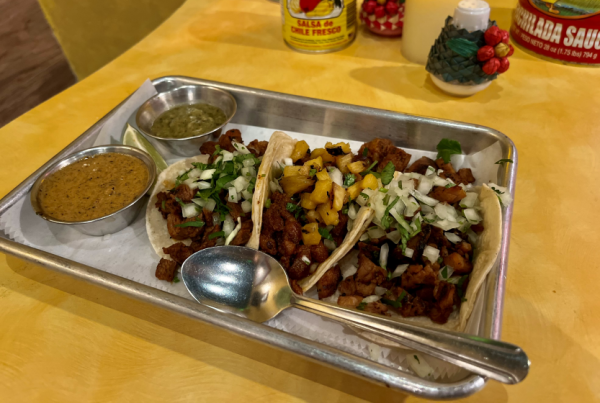Going green: a mixed [recyclable] bag
March 15, 2019
Since early elementary school, I have been told to “go green.” Tips and tricks on how to save heat and recycle properly seemed to take up a major part of my education, with whole days dedicated to the cause. My best elementary school memories consist of blending my own smoothie by biking and getting prizes for each day I walked to school. However, I realized that my eco-friendly education would be put to waste if I did not apply the tips and tricks I learned to my everyday life. So, I decided to go completely environmentally friendly for one week to give living green the green light. For the week, I focused on three categories: food, transportation and recycling.
Food
Eating cleaner for the week was both extremely important and a difficult transition. Still, it is a vital part of going green because it helps cut down on greenhouse gas emissions. The agricultural sector accounts for a large part of U.S. greenhouse gas emissions, standing at nine percent of total emissions which mostly stems from raising animal products, according to the United States Environmental Protection Agency. To do my part, I stopped eating all meat, as well as milk and eggs. While it seemed reasonable in theory, actually following through with this commitment was a completely different story. Changing my diet made me realize just how much of my meals are composed of animal products. In the mornings, I would have to double back, putting away the usual eggs to opt for toast or fruit. I also faced increased difficulty when eating out, such as when I needed to put in a special request at the Anchor and Hope restaurant. Although the restaurant was able to accommodate a vegetarian meal, having to request a special meal exemplified how difficult it is to avoid animal products.
After the first two days, adjusting to the meat-free diet became easier. Substitutes were easier to find and, after a quick trip to Trader Joe’s and Safeway, were readily available. Nuts, fruit, popcorn and chips became some go-to snacks, and for dinner, pasta and salads reigned supreme. Not only did I gain a sense of pride from eating eco-friendly meals, but the cleaner lifestyle also prompted me to try new recipes and find different takes on common dishes.
Transportation
Throughout the week, I carpooled or walked to all of my destinations, most of which were within a five-mile radius. his was made easier by having a sister who was going to and from most of the same places I was, so I was able to catch a lot of rides. However, when I couldn’t carpool, I would walk. This made me realize the vast difference between driving and walking. What would have been a 10 minute car ride turned into a 40-minute walk, giving me a new appreciation for how much effort it takes to travel such seemingly short distances. Besides this, the rain and cold weather acted as a deterrent to going out. Even when equipped with an umbrella and rain gear, I would still get wet after a few minutes. By the end of the week, I missed being able to drive myself and found transportation to be the hardest part of being environmentally friendly to achieve. Still, I would not say that this experience dissuaded me from taking a green route. I did find a few tricks to make transportation more enjoyable. Listening to music while walking allowed me to enjoy the journey more, and, I also found that using other modes of transportation, such as biking or skateboarding, let me reach my destination with less physical effort on my part.

Recycling
The last major category I focused my environmentally-friendly efforts on was recycling. In contrast to transportation, this was the easiest part of going eco-friendly as all it took was an extra second of thinking before deciding where to throw objects away. Despite this, only 34 percent of wastes are recycled in America, compared to the 75 percent that is possible to recycle, according to Planet Aid. Many plastics and glass containers can be recycled, and just taking the additional step to find out what goes where was a simple task that has a large impact in saving energy and resources, saving up to 95 percent of the energy it would take to create a new product, according to Stanford University. More beneficial than just recycling, many products can also be re-used. Reusing containers, like soup cups, can be an effective way to reduce the use of disposable plastics. These methods of prevention and control both work together to make living sustainably a little more impactful.
While these are not the only actions one can take to become eco-friendly, they can make our earth a bit cleaner. Overall, going green felt difficult when I first started, but became easier as I adjusted to the new lifestyle. By the end of the week, being environmentally friendly seemed normal, and even with the noticeable differences, the knowledge that I was doing a bit of good for the world outweighed what I was missing. The experience made me more aware of my impact on the earth and although I am not continuing on such an extreme level, I am planning to incorporate aspects of this lifestyle (such as eating less meat and continuing to recycle properly) into my life.























